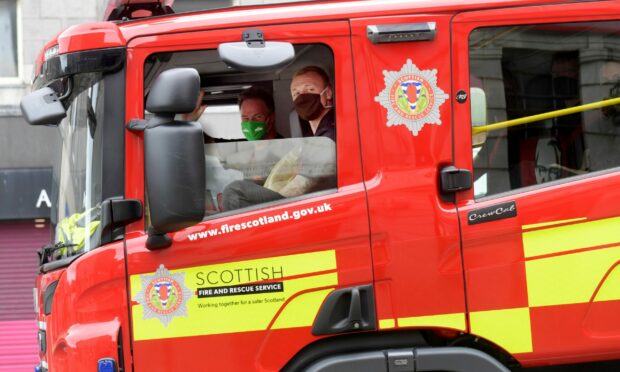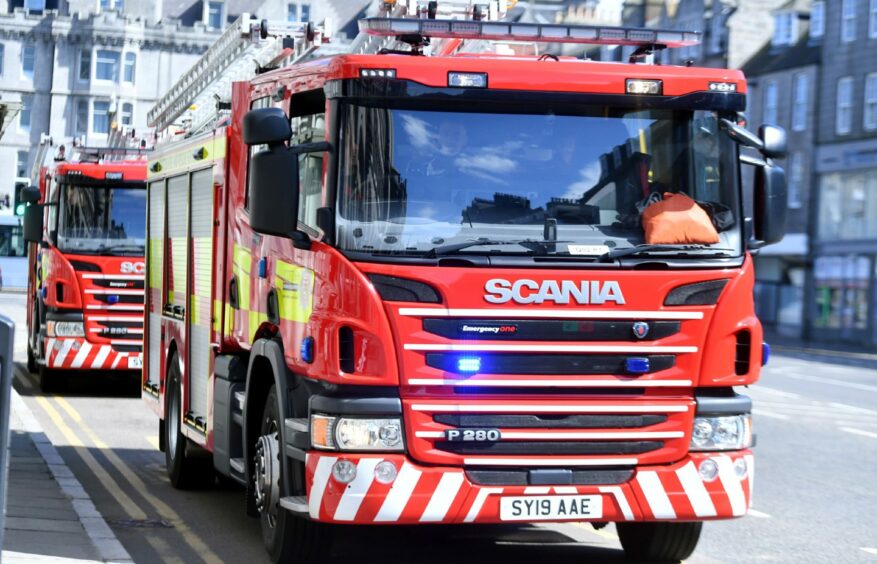Around 64,000 hours of firefighters’ time is needlessly spent each year checking out false alarms from workplaces, Scottish Fire and Rescue Service (SFRS) figures show.
The service mobilises on average two fire appliances and nine firefighters to each of the 28,479 false alarms – equating to around 57,000 unnecessary blue light journeys annually.
Most alarms are activated by faults or other causes like steam or burnt food, with only 2% actually involving a fire, most of which are put out before the arrival of crews.
These unnecessary blue light journeys bring risks to our crews, other road users and pedestrians, as well as impacting the environment.”
Stuart Stevens, Scottish Fire and Rescue Service.
The information has been shared by the service as part of its consultation on how to safely reduce call-outs to false alarms, known as Unwanted Fire Alarm Signals (UFAS).
Assistant chief officer (ACO) Stuart Stevens said businesses and partners have a key role to play in reducing the figures.
He added: “The advantages of getting duty-holders to accept their legal responsibilities and reduce these call-outs are clear.
“Making this change means we can free up firefighters’ time, be even more responsive in genuine emergencies and use SFRS resources more effectively.
Other benefits
“We can also carry out more training and fire prevention activity, as well as realise the related benefits of improving road safety and reducing our carbon impact.
“These unnecessary blue light journeys bring risks to our crews, other road users and pedestrians, as well as impacting the environment with an estimated 575 tonnes of carbon emissions produced – the equivalent of heating 230 homes a year.
“Businesses will also experience less disruption as they no longer need to wait for us to attend to give the all-clear after a false alarm.”
Options
The 12-week consultation, which seeks views on three proposed options, is under way.
It may lead to some or all workplace automatic fire alarms (AFAs) being “call challenged” to establish whether there is a fire, or if there are any signs of a fire.
One of the options would introduce a requirement for callers to also make a back-up 999 call confirming fire, or signs of fire before any fire appliances are sent out.
Premises recognised as places where people sleep would be exempt from the 999 call requirement.
SFRS said that while early feedback from the consultation was encouraging overall, with many members of the public taking part, there had to date been a poor response from the businesses that would potentially be most affected by the proposed changes.
ACO Stevens added: “It may be these businesses and organisations are taking their time to fully consider the proposed options.
“I’m also aware last month we were just coming out of a holiday period which is why we’re issuing this appeal for those most affected to take part in the consultation and play their part in helping to shape the future response model.”
‘It’s now time for SFRS to make the change too’
The consultation brings the SFRS into line with most other UK fire and rescue services in responding to AFAs.
The legal responsibility for dealing with an AFA alert lies with the duty-holder of property and most UK fire and rescue services now seek confirmation of a fire before attending.
“It’s now time for the SFRS to make this change too”, ACO Stevens said, adding: “Each of the options, which have all been risk assessed, will see a significant reduction in the number of UFAS calls we attend.
“We want to know what those most affected think of our three proposed options.
“I urge them to have their say on how they think we can best use our resources to keep them, their families and their communities even safer.”
The consultation document – Time for Change: Reducing Unwanted Fire Alarm Signals – and survey can be accessed online via the SFRS website until October 11.
A report based on analysis of the consultation responses, including a preferred option, will be considered by the SFRS board in December.

